DeAnna Cameron's Blog, page 4
September 12, 2016
#CoverReveal: THE GIRL ON THE VAUDEVILLE STAGE
Who’s THE GIRL ON THE VAUDEVILLE STAGE? Well, let me tell you 
September 7, 2016
Thank You for a Great First Day for THE GIRL ON THE MIDWAY STAGE!
You guys are a fantastic bunch. Seriously. I have never had a book debut in the top 10 of an Amazon subcategory before, and that’s exactly what THE GIRL ON THE MIDWAY STAGE did yesterday, thanks to all of you!

Do you know what happens when a book hits #7 in that subcategory? It has the privilege of sitting between to Ken Follett and James Michener. Yeah, I thought that was really cool, too! Do you have a friend who might be interested in the Dora’s adventures with the Egyptian belly dancers at the 1893 Chicago World’s Fair? Please let them know the book will be available for 99 cents for another day.
Do you have a friend who might be interested in the Dora’s adventures with the Egyptian belly dancers at the 1893 Chicago World’s Fair? Please let them know the book will be available for 99 cents for another day.
Here’s the universal link that will take them to the Amazon store in their region: myBook.to/TheGirlOTMS
Thanks again, everybody. It was a fantastic day!
September 6, 2016
THE GIRL ON THE MIDWAY STAGE Is Officially Out: Release Day Sale!
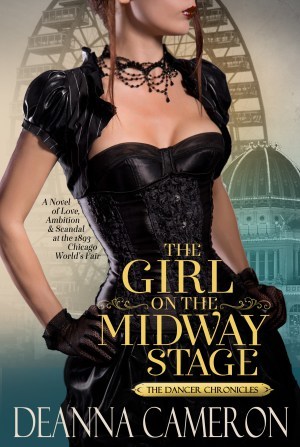 THE GIRL ON THE MIDWAY STAGE
THE GIRL ON THE MIDWAY STAGE(The Dancer Chronicles, Book 1)
$3.99 ebook
Get it TODAY for 99 cents!
What happens when a nice Victorian girl meets the Egyptian belly dancers? Follow Dora’s scandalous adventure at the 1893 Chicago World’s Fair…
Young bride Dora Chambers can’t wait to begin her new life in Chicago. It’s an exciting time, with the 1893 World’s Fair putting a kaleidoscope of new inventions, new cultures, and new ideas on display.
Unfortunately, those aren’t the only things on display.
The Egyptian belly dancers’ performances are stirring up a scandal, and the distasteful task of enforcing proper conduct on them has fallen to Dora as part of her initiation into the Fair’s prestigious Board of Lady Managers.
Dora’s sensibilities, however, are not so easily flustered by the dancers. She finds herself captivated by these exotic women, and by their enigmatic manager, Hossam Farouk, who makes his mistrust of her known–although his lingering glances hint at something else.
As Dora’s eyes are opened to the world beyond her own, she finds the courage to break free of her life of social expectations and self-imposed bondage, and discovers the truth about the desire and passion in her heart.
THE GIRL ON THE MIDWAY STAGE is a lush historical novel rich with authentic period detail, discovery, and romance that will sweep you up in Dora’s struggle to understand herself, her quickly changing world, and her unique journey to happiness.
Amazon US: http://amzn.to/2c0qKLa
Amazon UK: https://www.amazon.co.uk/Girl-Midway-Stage-Ambition-Chronicles-ebook/dp/B01LM18MSW
Amazon CA: https://www.amazon.ca/dp/B01LM18MSW
Amazon AUS: https://www.amazon.com.au/Girl-Midway-Stage-Ambition-Chronicles-ebook/dp/B01LM18MSW
*** This book was formerly published as THE BELLY DANCER ***
Happy reading!
DeAnna
September 5, 2016
THE GIRL ON THE MIDWAY STAGE #Novel #Inspiration: The Egyptian Belly Dancers at the 1893 Chicago World’s Fair

Egyptian dancers who performed at the 1893 Chicago World’s Fair. Credit: Unknown photographer via Wikicommons.
I’ve already shared a little about the Cairo Street attraction at the 1893 Chicago World’s Fair, but today I’d like to elaborate on the Egyptian women dancers, along with Egyptian men musicians, who were hired to perform in the fair’s Egyptian Theatre.
An important thing to know about these performers is that they weren’t ordinary Egyptians. They were people from a distinct tribe called the Ghawazee, and they lived on the fringes of even their own society.
These were families who supported themselves by performing at weddings, saints day festivals, and other celebrations, and within the Egyptian society, this wasn’t considered an honorable profession. These people — these performers — professed the Muslim faith and spoke the same language as the larger Egyptian society, but they occupied the lowest rungs of their country’s social hierarchy.
Also, the Ghawazee social rules were quite different, not only from the Americans but also those of Egypt at the time.
These women made their living as dancers, and, if they took a husband — and they weren’t required to — he might drum for her or play some other instrument to accompany her dancing. He was a subordinate part of the act and the family structure. The women were the breadwinners, which gave them the power in the household. They made the decisions, and this afforded them a level of independence that very few American women enjoyed at this time.
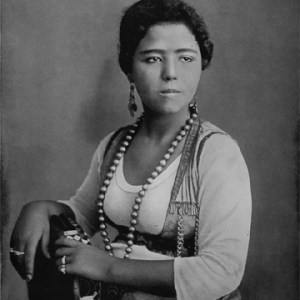
An Egyptian dancer who performed at the 1893 Chicago World’s Fair. Credit: Unknown photographer via Wikicommons.
Another important thing to know about the Ghawazee is that in 1834, about 60 years before the fair, the government banished them from Cairo to Upper Egypt. Officially, it was in response to their practice of dancing without veils covering their faces and in a manner that wasn’t considered proper for a lady. But many have suggested it was primarily because these women simply didn’t follow the government’s rules, and in a male-dominated world like Egypt and most other countries at that time, that just wasn’t tolerated.
By the time the fair rolled around, these women were already outcasts in the own country, so I can’t imagine it surprised them when they faced more trouble in Chicago about the way they dressed, the way they danced, and basically the way they led their lives.
This is something that was written about their performances by a Mr. Hubert Howe Bancroft in “The Book of the Fair,” which published the same year as the fair.
“The dancing … is merely a series of writhing and contortions offensive to taste and disgusting to look upon.”
Strong words, but I think it’s fair to say they’re untrue.
If they were true, the Egyptian Theatre wouldn’t have been one of the fair’s biggest money-making exhibits, which it was. And, even more importantly, the legacy of what those ladies did upon that stage 120-plus years ago wouldn’t have captured the imagination of millions of men and women, and endured as a thriving art form even to this day.
It has been an amazing experience for me to research these women and to learn about them, and it was important to me to honor their legacy and share at least some of their story with readers.
In THE GIRL ON THE MIDWAY STAGE, I wanted to make the Egyptian dancers come alive for the reader and to share their unique story.
Thank you for spending some time with me and taking an interest in my work. If you’d like to see how all these influences come together, please check back tomorrow, when I post The Girl on the Midway Stage’s opening chapter.
In the meantime, check out my Inspiration board on Pinterest.
ENTER TO WIN A FREE SIGNED PAPERBACK!
THE GIRL ON THE MIDWAY STAGE is a lush historical novel rich with authentic period detail, discovery, and romance that will sweep you up in Dora’s struggle to understand herself, her quickly changing world, and her own unique journey to happiness.
September 4, 2016
THE GIRL ON THE MIDWAY STAGE #Novel #Inspiration: The Board of Lady Managers, and Other Properly Dressed Ladies of the #Victorian Age
I mentioned the Egyptian dancers yesterday, and before I say anymore about them, I’d like to give you some context because at this time in our country’s history, American women dressed very differently than they do today.
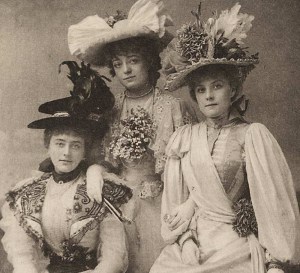
An example of Victorian fashion. Credit: Photographer unknown via Wikicommons.
They were expected to wear corsets and floor-length dresses. Skin was to be covered, and to allow a man to see even one’s ankle was to invite scandal. So, you can imagine what Americans must have thought when they saw the Egyptian dancers.
Although their costumes were downright modest compared with the costumes we associate with belly dancers today, the attire was scandalous in 1893.
At this time, America was still very much anchored in the Victorian Age. As you can imagine, polite society was shocked that these foreign women didn’t wear corsets, that their skirts rose above their ankles, and that you could see much of their natural form.
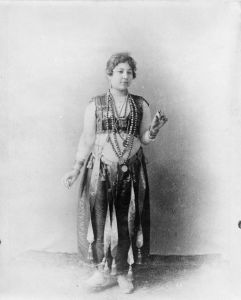
An Egyptian dancer. Credit: Photographer unknown via Wikicommons
By contrast, proper Western women were expected to wear clothing that obscured nearly every inch of their natural form. The “proper” silhouette was something along the lines of a full, floor-length skirt, a minuscule waist (wrestled into shape by a corset, of course), maybe a bustle, and big, poofy, exaggerated sleeves.
While this American idea of fashion was extremely modest, it was quite an unnatural shape, if you think about it. But anyway, that was the expectation of the time.
So, when the Egyptian dancers appeared in their ankle-baring skirts and their tiny vests over thin little blouses and no corsets, that alone was enough to cause a great deal of outrage among the locals.
Add to that the dance itself, with its shoulder shakes and hip wiggles, the hip drops and rotations, the undulation and jiggles — all these vigorous, earthy movements — and it was simply too much for most citizens to bear.
Many people considered it downright vulgar, and you can imagine the public outcry that followed.
Complaints were lodged with the fair’s authorities, and the local newspapers were filled with letters to the editor calling for these dancing entertainments to be shut down.
And the criticism was pretty widespread – it came from regular folks, as well as the religious and civic leaders of the day.
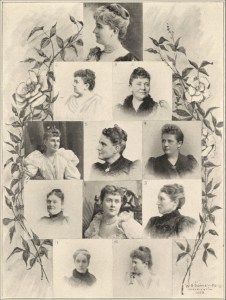
The officers of the Board of Lady Managers of the 1893 Chicago World’s Fair. Credit: The Field Museum Library via Wikicommons
The Board of Lady Managers, the fair’s women’s auxiliary group that is an important part of my novel, also opposed the performances and tried to ban them, but it’s worth noting that the board’s leader, Bertha Palmer, who was a very powerful woman in Chicago’s social circles (largely because she was the wife of Potter Palmer, one of the most powerful businessmen in Chicago), was quoted in the Chicago Daily News as wanting to work with the dancers, and not simply shun them.
This is her quote from that newspaper:
“In some ways they [the foreign dancers] are ignorant and I think we owe it to our cause that we visit these women and invite them … and spend time and money on teaching them our ways and manners.”
Those were her words and that was also the mind-set I borrowed to open the door for the heroine in my novel to get close to the dancers. It becomes the basis of her relationship with them.
I was also interested in exploring the lives of the Egyptian dancers. As a fan of belly dance and as someone deeply interested in its history, I wondered what could have happened if these women really had taken the time to get to know the Egyptian dancers.
I believe the American women would have discovered that the dancers had at least as much to teach, as they did to learn.
I’ll share more about that tomorrow 
September 3, 2016
THE GIRL ON THE MIDWAY STAGE #Novel #Inspiration: 1893 Chicago World’s Fair
The 1893 Chicago World’s Fair was an amazing moment in history, and not just because it introduced a large segment of America to the wonders of belly dancing.
Something truly amazing was happening along the shore of Lake Michigan during that time. It was something that brought more than 27 million people from all over the nation, actually the world, to 600 acres of what had been a marshy swamp that developers and architects crafted into a complex landscape of nearly 200 new buildings, canals, lagoons, and parkland.
Most people know it as the 1893 World’s Fair, but its official name is The World’s Columbian Exposition because it was intended to celebrate the 400-year anniversary of Christopher Columbus’s discovery of the New World.
(Yes, the organizers realized they were a year off, but – in order to make the fair the big splash that they wanted it to be – they decided to ignore that detail.)
So this World’s Fair was a city within a city, In fact, that was a nickname many people gave it: The White City – because a good number of the most prominent buildings, crafted in the highly ornate Beaux Arts style, were painted a brilliant and startling white. They were gorgeous and palatial and intended to inspire awe.
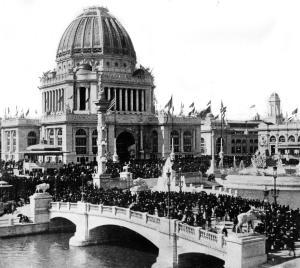
The Administration Building at the 1893 Chicago Worlds Fair. Credit: C.D. Arnold via Wikicommons
As a side note, these building were also designed to be temporary. Although they looked impressive, they were made of plaster and never intended to last much beyond the fair’s closing date.
The 1893 fair was also only the third world’s fair in American history, after a centennial celebration of the nation’s birth in Philadelphia in 1876, and another in New Orleans in 1884.
And the folks behind the 1893 fair wanted this one to be bigger and better than anything that had ever happened before it. They particularly had their eye on the Paris Exposition, which had taken place only a few years before, in 1889, which had given the world what was then the tallest man-made structure in the world: the Eiffel tower.
Paris was a tough act to follow, but the 1893 organizers were determined. They intended to bring together the best minds, the best artists, the best inventors, and the finest innovators of the age.
And Chicago had to fight for the opportunity to do this. The city beat out Washington, D.C. and St. Louis, and even its greatest municipal rival, New York, for the right to host this fair.
That didn’t faze the shrewd Midwest businessmen behind the effort. They knew what an opportunity this would be for Chicago. They knew what it meant for future business, industry, and growth if Chicago could show that the city could outshine New York. They knew they had to prove to their own citizens, the country, and even the world, that Chicago was prepared to be the new center of American commerce in the Industrial Age.
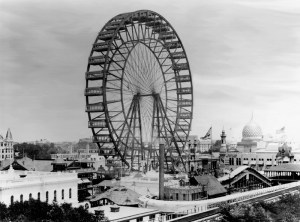
The original Ferris Wheel debuted at the 1893 World’s Fair. Credit: Author unknown via Wikicommons.
A lot of firsts took place at the Chicago World’s Fair:
It had the first Ferris Wheel.
It was the first fair to have electricity.
It introduced the first commercial movie theater.
It even introduced a moving sidewalk to transport fairgoers along the Lake Michigan bank.
Some other fun firsts were:
Cracker Jacks, though it wasn’t called that until 1896
The hamburger
Chili con carne
Juicy Fruit Gum
Breakfast cereals, including Quaker Oats, Cream of Wheat, and Shredded Wheat
Another thing to know about this fair was that it was intended to be very high-brow, very refined, and very respectable.
But anyone who has ever been to a fair knows that people don’t go simply to look at the exhibition hall collections.

The Egyptian Theatre on Cairo Street. Credit: N. D. Thompson Publishing Co. of St. Louis
They want to have fun.
And that’s where the Midway Plaisance came in. It wasn’t technically part of the fair. It was an amusement park tacked onto the fair’s backside. Literally. It was a mile-long park divided into sections where exhibitors presented mostly ethnic entertainments. There was a German village, an Irish village, a Laplander village. Native Americans, and Javanese.
But the attraction that was far and away the most popular was the one called Cairo Street.

A camel ride at the 1893 Chicago World’s Fair. Credit: Conkey, W. B., co., Chicago, pub. (from old catalog) via Wikicommons.
It stretched about a city block, and it was pretty amazing. Imagine this: Fair visitors entered through a broad, low portal, into a brick courtyard of tiny booths and bazaars, filled with Arabs, merchants, Sudanese, donkey boys, performing monkeys, and snake charmers.
The mosque, complete with a minaret, had massive doors where regular services were held every Friday at noon. One of the highlights was the camel ride, where couples would get onto the seated camel and be thrown against each other as the camel rocked to its feet.
This was also where Egyptian women in gauzy garments with golden ornaments in their headdresses and tiny cymbals on their fingers danced in the attraction called the Egyptian Theatre.
Want to know more? Tune in tomorrow!
In the meantime, check out my Inspiration board on Pinterest.
ENTER TO WIN A FREE SIGNED PAPERBACK!
THE GIRL ON THE MIDWAY STAGE is a lush historical novel rich with authentic period detail, discovery, and romance that will sweep you up in Dora’s struggle to understand herself, her quickly changing world, and her own unique journey to happiness.
September 2, 2016
THE GIRL ON THE MIDWAY STAGE #Novel #Inspiration: #Victorian Heroines
Why do women who break the rules always seem to suffer in Victorian novels?
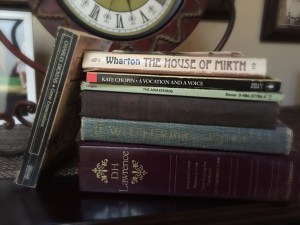 Don’t get me wrong. I love the classics. The Awakening, Madame Bovary, Vanity Fair, The House of Mirth, and Washington Square are just some of my all-time favorites. I love the richness of the era, the lush writing, and the unique challenges created by that stratified society.
Don’t get me wrong. I love the classics. The Awakening, Madame Bovary, Vanity Fair, The House of Mirth, and Washington Square are just some of my all-time favorites. I love the richness of the era, the lush writing, and the unique challenges created by that stratified society.
What I don’t love is that heroines who go against the grain don’t seem to get a happy ending.
It isn’t fair, and I don’t even think it’s true. Women — and men, too — who have the courage to follow their heart and their dreams can be happy. In fact, those are probably the only people who will ever find true happiness.
When I began writing the story that has become THE GIRL ON THE MIDWAY STAGE, I didn’t know exactly how it was going to end, but I knew this: The woman who broke the rules and followed her heart was going to get a happy ending.
I’ll share more inspiration tomorrow. In the meantime, check out my Inspiration board on Pinterest.
ENTER TO WIN A FREE SIGNED PAPERBACK!
THE GIRL ON THE MIDWAY STAGE is a lush historical novel rich with authentic period detail, discovery, and romance that will sweep you up in Dora’s struggle to understand herself, her quickly changing world, and her own unique journey to happiness.
Book photos by DeAnna Cameron.
September 1, 2016
Enter the JINGLY BELLS Goodreads #Contest
Just a quick note to let you know you can enter to win a FREE signed copy of JINGLY BELLS at Goodreads. 
THE GIRL ON THE MIDWAY STAGE #Novel #Inspiration: Cajun Creole Cuisine
I’ll be honest, the thing that initially drew me to New Orleans was the food. It’s also what I turn to whenever I’m missing that great city and can’t hop on a plane.
Really, it has become a bit of an obsession. I collect regional cookbooks, I’ve taken Cajun/Creole cooking classes, and I’ve hovered over many, many pots of roux, striving for that perfect dark chocolate color.
My family also throws a Mardi Gras party for 80 to 100 people every year, and I spend days planning the menu and preparing the food. Yeah, it’s a little over the top — but I love it.
So, it was probably no surprise to anyone who knows me that some of that Crescent City cooking made its way into this novel.
It was also my way of showing (instead of telling!) a little of Dora’s appetite for the spicy things in life.
One of my all-time favorite recipes is a chicken and sausage gumbo that I’ve tweaked over the years. If you’re a fan of this cuisine, too, I hope you’ll give it a try. Or better yet, share your own recipe with me in the comments!

A hearty bowl of chicken and sausage gumbo.
CHICKEN AND SAUSAGE GUMBO
Yields 6 to 8 hearty servings
Ingredients
3 pounds chicken thighs, boneless and skinless
1/2 cup oil
1 cup flour
2 dried red chili peppers (more if you like it spicy!)
1 1/2 cup onion, diced
1 1/2 cup green bell pepper, diced
1 1/2 cup celery, diced
2 cloves garlic, minced
8 ounces andouille sausage, diced
1 quart low-sodium chicken broth
1 bay leaf
Crystal Pepper Sauce, to taste.
Salt and Pepper, to taste
4 ounces frozen okra, chopped
Cooked rice
Heat the oil in a dutch oven and brown the chicken on both sides, a few pieces at a time. Transfer the chicken to a plate and keep warm.
Lower the heat and add the flour slowly and stirring constantly. Cook over a low heat and stir constantly until the roux turns a rich, dark brown. This usually takes from 30 minutes to an hour, depending on your heat level. Be extremely careful not to let the roux burn.
Add the chili peppers, onion, green pepper, celery, garlic, and sausage to the roux and cook about 5 minutes and stir constantly until the vegetables are softened. Pour in the broth and stir well. Add the bay leaf, Crystal sauce, the chicken. Cover and cook for about 30 minutes, or until the chicken is sufficiently tender.
Add the okra and cook just until warmed through, about 10 minutes. Remove the bay leaf and serve in a bowl over rice.
COOK’S NOTE: I usually use red bell peppers instead of green bell peppers, because that’s what I tend to have on hand. Tabasco can be substituted for the Crystal sauce. Add more broth if the gumbo is too thick.
See you back here tomorrow for more #novel #inspiration!
ENTER TO WIN A FREE SIGNED PAPERBACK!
THE GIRL ON THE MIDWAY STAGE is a lush historical novel rich with authentic period detail, discovery, and romance that will sweep you up in Dora’s struggle to understand herself, her quickly changing world, and her own unique journey to happiness.
Gumbo photo courtesy of duplass via depositphotos.com.
August 31, 2016
THE GIRL ON THE MIDWAY STAGE #Novel #Inspiration: New Orleans
I’m a northern girl (Montana) who has lived in Southern California most of my life, but a special part of my heart will always belong to New Orleans. The first time I went was years and years ago with a friend, and I fell in love with the place. I go back as often as I can to experience the unique culture, the music, the food (the food!!!!), the architecture, the history — I even went once to get married, but that’s another story…
The French Quarter is especially dear to me because of its strong connections to history. One of my favorite things to do when I’m there is to walk those narrow streets at dawn, before the crowds are out, because on those misty mornings I can best imagine what it might have been like 100, even 200 years ago. It’s about as close to time travel as I’m probably ever going to get.
So, when I began to think about the kind of woman who could get caught up in the heady excitement of Chicago during the 1893 World’s Fair and could also develop a kinship with the Egyptian dancers, I knew she had to have roots in New Orleans — roots that would play an important role in the story and an even greater role in her personal evolution.
I’ll share more inspiration tomorrow. In the meantime, check out my Inspiration board on Pinterest.
Or, enjoy some French Quarter views.




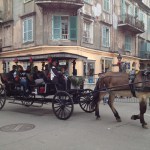

ENTER TO WIN A FREE SIGNED PAPERBACK!
THE GIRL ON THE MIDWAY STAGE is a lush historical novel rich with authentic period detail, discovery, and romance that will sweep you up in Dora’s struggle to understand herself, her quickly changing world, and her own unique journey to happiness.
New Orleans photos by DeAnna Cameron.










